Computers are designed to enhance efficiency, but random shutdowns can cause frustration. This guide addresses unexpected shutdowns on Windows-based machines, providing solutions to restore stability and peace, offering relief to users facing this unsettling issue.
Computers are supposed to make things better and save us time and nerves. Ideally. “But what if my PC randomly turns off?” you might ask.
Well, random shutdowns cause nervous breakdowns. Therefore, our task today is to address the “My PC shuts down automatically” drama and bring peace and stability into your life.
So, your computer keeps shutting down randomly, and you are at your wits end with this problem. Well, your Windows-based machine might be possessed, but that’s unlikely.
Seriously, Why Does a PC Turn Off?
1. Overheating
If your PC turns off without warning, heat-related issues might be at work.
These problems typically arise from:
- Improper PC usage,
- Running heavy apps and numerous background processes,
- Malfunctioning fans,
- Accumulation of dust, dirt, and debris,
- Overclocking.
Improper PC usage
Heat and computers don’t mix well. It means that you need to keep your PC cool at all times if you don’t want the motherboard protection mechanism to kick in, which is one of the primary reasons your computer randomly turns off. To prevent overheating:
- Keep your PC in cool environments,
- Ensure proper airflow around the PC,
- Avoid placing the computer directly against walls,
- Protect it from direct sunlight,
- Don’t use it in environments with high humidity,
- Use a cooling pad if you’re a laptop owner,
- Replace thermal paste if the PC gets too hot.
Further reading: Ultimate Guide: How to Stop a Laptop from Overheating
Running heavy apps and numerous background processes
Some of the latest AAA game titles, as well as CPU-hungry video editing and 3D modeling software, especially if they are coupled with constantly running background services and other processes, can easily heat up your computer.
If that’s the case, you need to limit your PC’s background activity and consider a cooling system or even a full-scale upgrade of your computer.
Failing fans
Malfunctioning video card, case, or processor fans can cause overheating. Check your fans for issues:
- Squealing fans clearly indicate a problem and may need replacing.
- Clean dirty or dusty fans and your shutdown problem may be resolved as simply as that.
Dirt and dust
Dusty computers are prone to overheating due to poor air circulation and create a perfect breeding ground for germs. Regular cleaning of your PC can help prevent shutdowns caused by dirt and debris.
That said, keep your PC clean and kick the habit of eating near it, and you’ll be just fine.
Further reading: How to Clean the Water Cooling System on Your PC
Overclocking
If your PC has been overclocked, its components may not be able to meet the increased power demands. Keep in mind that overclocking your computer is playing with fire: it may cause serious damage to your machine.
That is why we recommend you to disable your overclocking utilities—your system should run as fast as it is supposed to. Otherwise, it may become overheated and a bit neurotic.
2. Hardware problems
Hardware issues can make it so that your PC randomly turns off. First, try unplugging recently installed devices and see if it helps. If not, here are some tips to deal with hardware problems:
Device Manager
In order to identify the problematic device, try utilizing Device Manager. This Windows utility generates error codes and helps you troubleshoot device issues.
To access Device Manager in Windows 10, go this way:
Start -> Control Panel -> Performance and Maintenance -> System -> Hardware tab -> Device Manager.
There’s also a faster way to get there, which works for both Windows 10 and 11:
Win + X -> Device Manager.
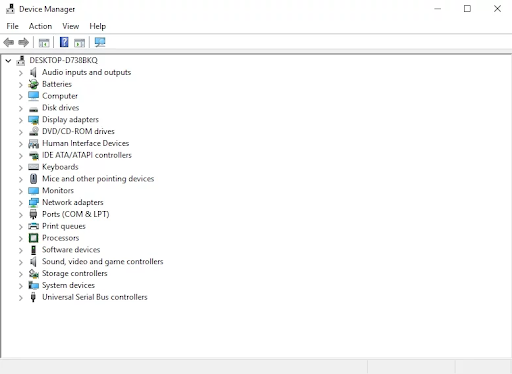
The Check Disk utility
Check whether your hard disk drive is working properly:
- Local Disk -> Properties -> Tools -> Error checking -> Check -> Scan drive.
or
Windows button (right click) -> Command Prompt (Admin) -> Type CHKDSK /f /r -> Enter -> Type Y -> Enter. - Wait for the process to finish -> Reboot your computer.
If you have refurbished your PC recently, remove the newly added hardware and check whether your computer is OK. The point is, your new hardware may lead to incompatibility problems and bring about spontaneous shutdowns.
Already have a list of suspects? Good for you! Try removing your hardware items one by one—this might help you troubleshoot the issue.
Further reading: Why Does a Windows 10 and Windows 11 PC Run CHKDSK at Startup?
Use Performance Monitor and Windows Memory Diagnostics
Did you know you can run diagnostic tests on Windows even without an OEM app? There are two native Windows tools you can use:
- Performance Monitor.
- Windows Memory Diagnostics.
You can use the first to check how your system’s components are performing and the second to run memory tests.
To run Performance Monitor, hit the Windows key to open the Start menu, type its name, and launch the app from the search results.
To get a quick summary of your PC’s hardware, navigate to Reports > System > System Diagnostics > [Computer name] via the left-hand pane.
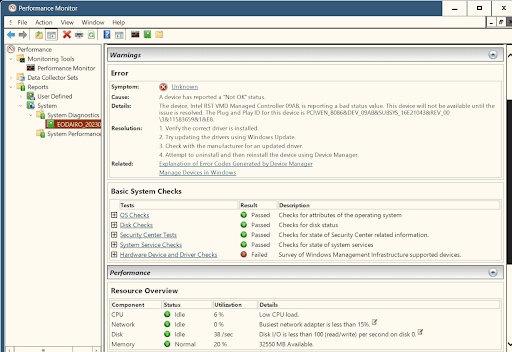
To use Windows Memory Diagnostics:
- Open Run with
Win key + R. - Type mdsched.exe in the Run field.
- Hit Enter.
- Select Restart now and check for problems (recommended).
The tool will conduct a couple of memory tests. These generally take at least 5 minutes so be patient.
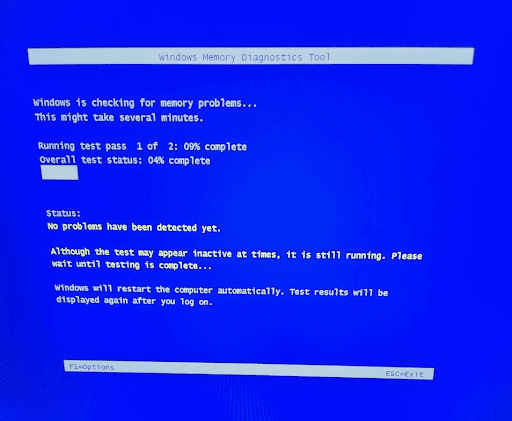
When the scan finishes, the PC restarts, and the test result will appear on the desktop when you log in. If it doesn’t, open the Event Viewer and go to Windows Logs > System. Look for the most recent file, Memory Diagnostic, and open it to view the report.
Windows 10/11 (8, 7, Vista, XP)
3. Driver issues
Faulty or out-of-date drivers can lead to random shutdowns in Windows 10 and 11.
Here are some proven tips to get your drivers in tip-top condition:
Utilize Windows Update
Your Windows 10 can search for driver updates on its own:
Start -> Settings -> Update & Security -> Check for updates.
Here’s the path for Windows 11 users:
Start -> Settings -> Windows Update -> Check for updates.
Run Windows Driver Verifier
You can also make use of Windows Driver Verifier—it can detect problematic devices:
Start -> Type verifier -> Enter -> Follow the Driver Verifier prompts.
Use Device Manager
In addition, try using Device Manager in order to resolve driver issues:
- Use the
Windows key + Xcombination and select Device Manager. - Select and right-click the driver(s) or driver group(s) that are outdated.
Choose the Update driver option and follow through with the process.
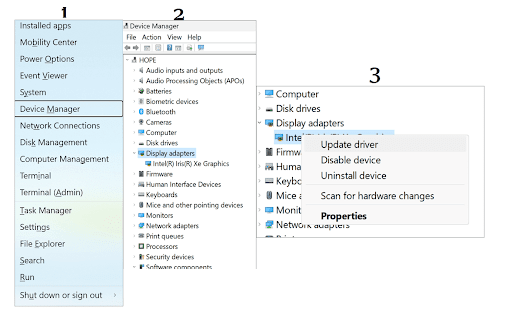
Fix your drivers manually
You can troubleshoot your drivers manually, one by one. You might need to completely uninstall your drivers first and then reinstall them. Search for the latest driver versions for your models on the vendors’ websites.
For example, if you need to update your graphics drivers, you can follow our guides on how to update NVIDIA drivers and AMD drivers.
Use a special tool
To diagnose and fix all your driver issues in a fast and simple way, try a special tool, e.g. Auslogics Driver Updater.
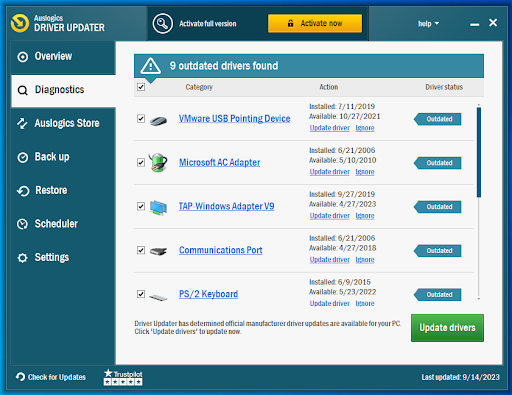
4. Malware infection
If your PC randomly turns off or keeps shutting off spontaneously, you should scan your system as soon as possible—such symptoms are indicative of a malware infection.
Here is your first aid kit:
Windows Defender
Microsoft Windows Defender is a built-in security solution that can banish unwelcome guests from your computer. If your PC runs Windows 10, follow this path:
Settings -> Update & Security -> Windows Security -> Virus & threat protection -> Scan options -> Full scan -> Scan now.
The path is pretty much the same in Windows 11, only with a slight difference:
Settings -> Privacy & Security -> Windows Security -> Virus & threat protection -> Scan options -> Full scan -> Scan now.
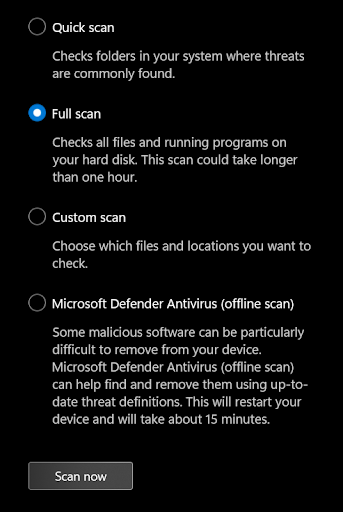
Your main antivirus program
Perform a deep system scan using your main security solution. Make sure you have the latest version of your antivirus software installed.
A special anti-malware tool
Let a special anti-malware tool join the battle—for example, Auslogics Anti-Malware will back up your main antivirus and force malicious invaders to beat a retreat. And if a malicious invader is the reason your PC keeps turning on and off, wouldn’t using this anti-malware tool fix the problem permanently?
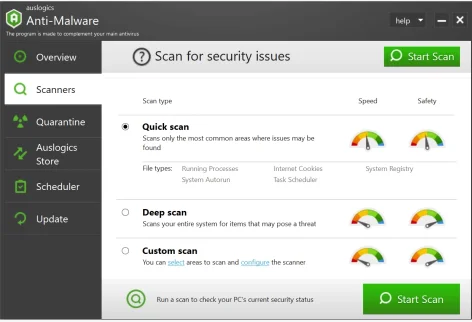
5. Battery problems
With time, laptop users tend to run into battery issues. So, if your venerable laptop has become too unpredictable and your PC randomly turns off, your battery might be the one to blame for this kind of misbehavior.
Consider replacing your old battery with a new one. Make sure your new battery fits your laptop’s requirements.
Also read: How to Check Your Laptop Battery Health on Windows 10 and 11?
6. UPS/Surge protector failure
Do you use a surge protector or an uninterruptible power supply (UPS)? If yes, make sure the device in question is not the reason your computer shuts off randomly: plug your computer directly into the power outlet and see if it works properly. If the issue seems resolved, your surge protector/UPS is either overloaded (try leaving just your computer plugged in) or simply defective (bad luck!).
7. Insufficient charger voltage
If you use resource-heavy programs or apps, you may need a charger with a higher voltage capacity. For example, if your charger is 90 watts or less, this might not be enough—as a result, your PC keeps shutting down spontaneously.
8. Dodgy Sleep Mode
Sleep Mode is a great option if it works properly: it preserves energy and lets you wake up your sleeping computer within just a few seconds. However, Sleep Mode may become dodgy in Windows 10 (in Windows 11 too, unfortunately) and cause it so that your PC randomly turns off instead of going into Sleep Mode.
Try disabling Sleep Mode to fix the issue. Here’s the path for Windows 10:
Start -> Settings -> System -> Power & Sleep -> Select Never for both Screen and Sleep.
And here’s where to go if you’re on Windows 11:
Start -> Settings -> System -> Power & battery -> Screen and sleep -> Select Never for all options.
Do you know how to disable and enable hibernation on Windows?
9. Fast Startup disadvantages
The Fast Startup option helps your computer boot up faster. Unfortunately, Fast Startup may account for spontaneous shutdowns.
Disable Fast Startup and check the reaction of your PC. The steps are the same for both Windows 10 and 11:
- Start -> Control Panel -> Power Options -> Choose what the power buttons do -> Change settings that are currently unavailable.
- Shutdown settings -> Uncheck Turn on fast startup (recommended) -> Save changes.
10. The automatic restart loop
Automatic restart is a feature that forces your computer to restart automatically after crashes. Sometimes, however, if things go south, it can get into a restart loop, making your PC shut down randomly and then boot up over and over again. Here’s how you can disable the automatic restart:
- Press Win + R -> Type sysdm.cpl -> Advanced tab -> Startup and Recovery -> Settings -> Uncheck Automatically restart under System failure -> OK.
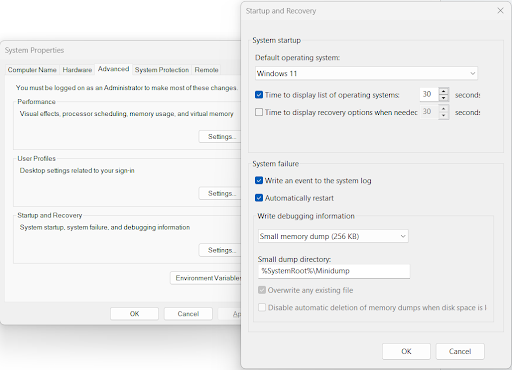
11. Out-of-date BIOS
If you continue to ask, “Why does my computer keep shutting down” after implementing the Fast Startup solution, consider updating your BIOS. This procedure must be performed carefully; otherwise, your PC can be irreversibly damaged. Therefore, if you are uncertain of your expertise, we recommend you to seek professional assistance.
Here are 5 consecutive steps to update your BIOS:
- Explore your vendor’s website -> Download the updated BIOS -> Place the compressed file on the root of your formatted flash drive.
- Boot your PC -> Hit Delete on boot -> BIOS -> M-Flash.
- Select one file to update BIOS and ME -> Select your flash drive.
- Wait for the system to reboot and start updating your BIOS.
- Wait for the updating process to finish.
12. Software issues
Certain software issues can make it so your PC randomly turns off.
Watch out for:
- Corrupted or missing system files,
- Non-optimal system settings,
- Faulty apps,
- Junk files,
- Windows Registry issues.
Again, just like with hardware, try uninstalling recently installed apps. If this doesn’t help, here are some ideas to sort out software problems:
Use the System File Checker
The System File Checker tool is aimed at repairing missing or corrupted system files:
- Start -> Enter Command Prompt -> Right-click Command Prompt -> Select Run as administrator.
- Enter DISM.exe /Online /Cleanup-image /Restorehealth -> Enter sfc /scannow.
- Wait for the system scan to finish -> Reboot your computer.
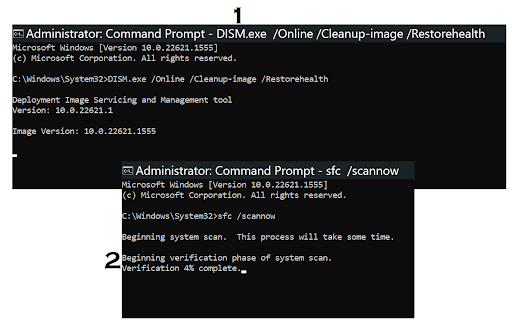
Run the Windows Store Apps troubleshooter
If you are experiencing issues with apps in Windows 10, try running the Windows Store Apps troubleshooter. Fixing app problems can stop continual shutdowns.
In Windows 11, troubleshooters are deprecated and are being replaced by the Get Help app, so you won’t find the Windows Store Apps troubleshooter in Settings.
However, there’s still a convenient way to launch it on both operating systems:
Click on the search icon -> Type Windows Store -> Select Find and fix problems with Windows Store Apps -> Follow the prompts in the app.
Troubleshoot your software manually
Take a closer look at the apps you use. Does your computer keep turning off while one particular application is running? Do your best to trace the culprit and reinstall the app in question.
Use a special diagnostic tool
Corrupt registry keys and entries, PC junk, and unbalanced system settings can turn your Windows into a roller coaster. Using a comprehensive tool, e.g., Auslogics BoostSpeed’s Tweak Manager, can get your computer back on track and save you a lot of time and effort. This could also come in handy to make the problem where your PC randomly turns off disappear.

Windows 10/11 (8, 7, Vista, XP)
13. Problematic OS
Windows issues deserve particular attention. To prevent them from hogging the limelight, we’d better discuss them here.
So, if you still have to ask, “Why does my PC keep turning off randomly?” after using the prescribed solutions, you might as well admit that your OS is not OK. Things might have gone wrong after upgrading to Windows 10 or Windows 11.
Here are some troubleshooting ideas for you to consider:
Use System Restore points
Take your Windows back to the good old days:
-
- Start (right-click) -> Control Panel -> System and Security. Alternatively, type Control Panel in Search and hit Enter.
- File History -> Recovery -> Open System Restore -> Next.
Select the preferred restore point and click Next -> Confirm the preferred restore point by clicking Finish -> Click Yes on the warning box.
Also read: System Restore Not Working in Windows 10
Reset your computer
Reset your computer to its factory default settings:
Start menu -> Type Reset-> Reset this PC.
You will be able to either stay on Windows 10 or downgrade to the previous version of Windows if you have upgraded the system previously—the choice is yours!
For Windows 11, you can reset your computer this way:
- Click
Windows key + Ito enter the Settings page. - Open the Windows Update tab and select Advanced options.
- Scroll down to Recovery and choose the option Reset this PC to recover the original OS files.
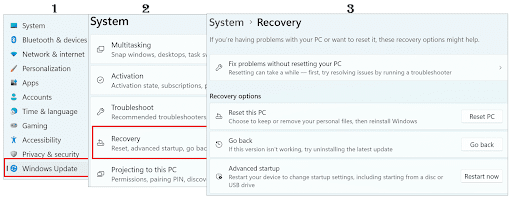
Reinstall your OS
Why not give your PC a fresh start? If, after using the Reset option, your PC randomly turns off nonetheless, consider reinstalling your OS. Unfortunately, this will erase your personal data. Thus, make sure you have backed up all your important files.
Preventive Measures Against Your Computer Shutting Down Randomly
In addition to these methods of fixing issues that make your PC turn off suddenly, here are some things you can do to prevent reoccurrence.
- Clean the outside parts of your computer regularly to prevent dust from accumulating.
- Ensure that your PC’s cooling system is running. If you have the skills and can open your computer without damaging anything, clean the fan frequently.
- Use UPS devices to guard against power fluctuations that could damage your computer’s components.
- Keep your drivers and software applications up to date. You can also do this whenever your computer shuts off randomly.
- Use your PC optimally without overloading it with too many running tasks and programs. Here, you can use the Auslogics Essential Tools package to monitor and improve your computer’s functionality.
PC Randomly Turns Off? Not Anymore
With all the fixes and tips provided in this article, your computer’s random shutdown problem should be resolved by now. Whether it’s hardware or software that’s the culprit, hopefully you already enjoy the smooth operation of your PC.
Which fix has worked for you? Please drop a comment below, and don’t forget to click the thumbs up and share this article with your friends who may experience the same issue.



![[SOLVED] PC Randomly Turns Off – What to Do?](https://www.auslogics.com/en/articles/wp-content/uploads/2023/04/Is-Your-Computer-Shutting-Down-Randomly-Fixes-and-Tips-Inside.png)
One reply on “[SOLVED] PC Randomly Turns Off – What to Do?”
Really i respect u for your direct advice and i use it what you post.